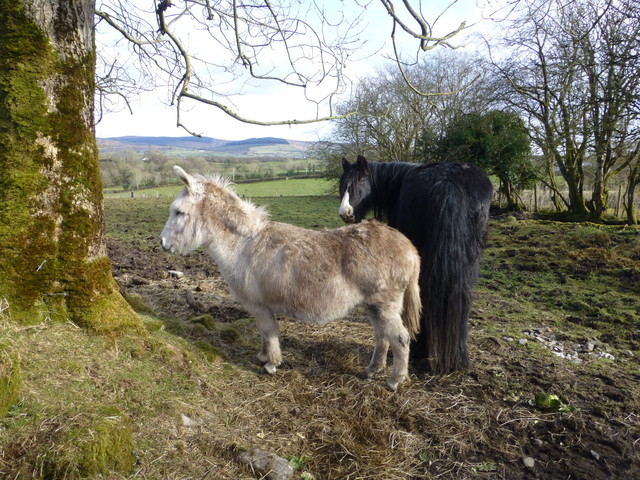In the pastoral expanses of ranches worldwide, an unexpected friendship often blossoms between two distinct equine species: horses and donkeys. These unlikely companions, despite their different temperaments, sizes, and evolutionary paths, frequently develop bonds that benefit both animals and their human caretakers. The partnership between these equines represents more than mere cohabitation—it’s a fascinating example of cross-species connection that has practical applications in ranch management while offering heartwarming demonstrations of animal companionship. From their complementary social behaviors to their mutual protection instincts, the horse-donkey dynamic showcases nature’s remarkable adaptability and the profound connections animals can form across species boundaries.
The Evolutionary Background of Horses and Donkeys
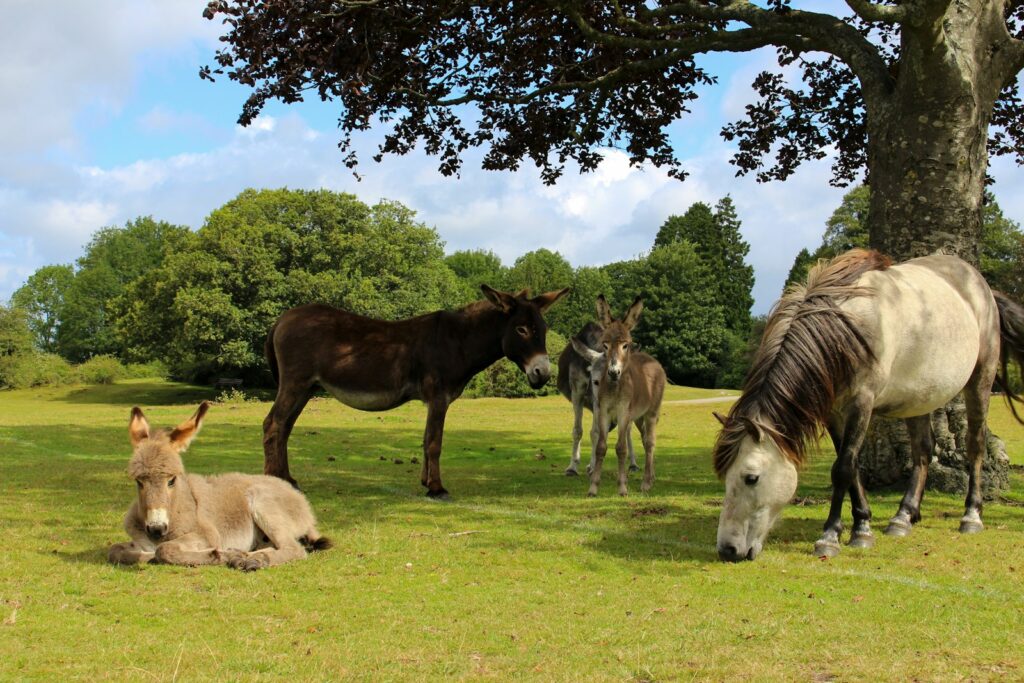
While horses and donkeys share the Equidae family tree, their evolutionary paths diverged approximately 4-5 million years ago, resulting in distinct species with different chromosome counts (horses have 64 chromosomes while donkeys have 62). Horses evolved to thrive in open grasslands, developing speed and agility as their primary defense mechanisms against predators. Donkeys, conversely, adapted to harsh desert environments, developing exceptional survival skills, including efficient metabolism and heightened awareness of potential threats. These evolutionary differences have shaped not only their physical appearances but also their behavioral tendencies and social structures, creating complementary traits that make their ranch partnerships particularly effective. Understanding these biological foundations helps explain why these two species, despite their differences, can form such productive relationships in domestic settings.
Complementary Temperaments and Behaviors
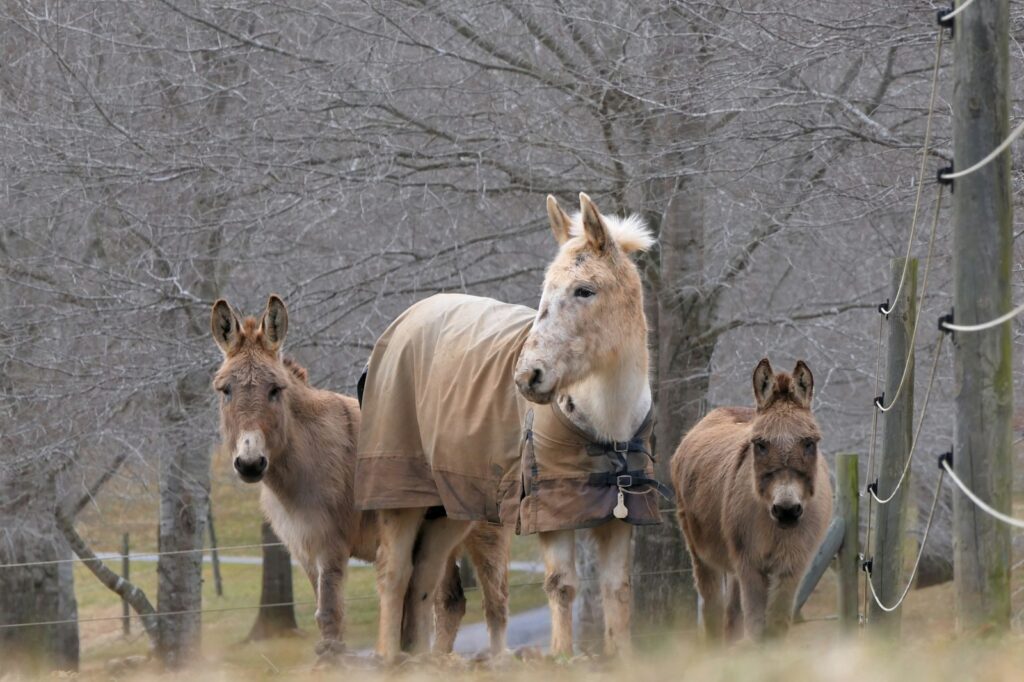
The contrasting temperaments of horses and donkeys create a behavioral balance that strengthens their bonds on ranches. Horses, generally reactive and sometimes prone to flight responses, benefit from the steadying presence of donkeys, who typically approach new situations with cautious deliberation rather than panic. Donkeys possess remarkable memory and problem-solving abilities, making them less likely to be startled by the same stimulus twice, while horses excel at reading environmental cues and detecting potential dangers from greater distances. This temperamental complementarity creates a feedback loop where donkeys help calm nervous horses, and horses alert their donkey companions to distant threats. Ranch owners often report that mixed horse-donkey herds demonstrate more balanced behavior overall, with fewer instances of extreme reactions to environmental changes. These behavioral differences, rather than creating conflict, often result in mutual learning and adaptation between the species.
Guardian Instincts: The Protective Role of Donkeys
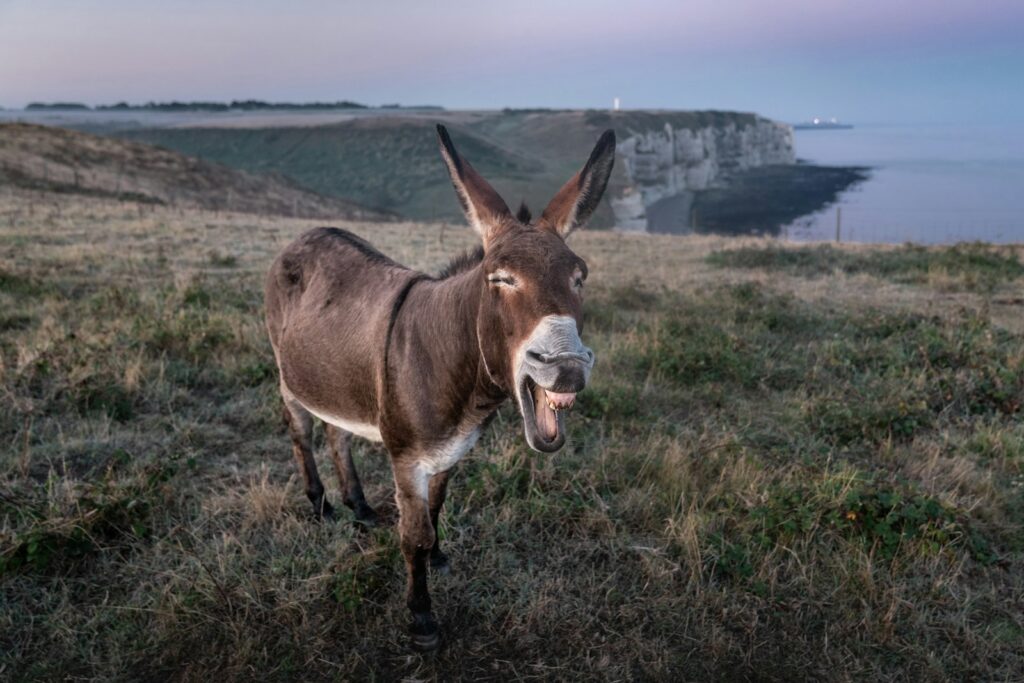
One of the most valuable aspects of the horse-donkey relationship on ranches is the donkey’s natural guardian instinct, particularly against predators like coyotes, wolves, and even domestic dogs. Unlike horses whose instinct is typically to flee from predators, donkeys have evolved to stand their ground and aggressively confront threats, using powerful kicks, bites, and intimidating brays to drive away potential dangers. This protective behavior extends beyond self-preservation to include the defense of their equine companions, making donkeys invaluable guardians for horse herds, especially those with vulnerable foals. Ranchers frequently introduce donkeys specifically for this protective purpose, finding that a single territorial donkey can significantly reduce predator-related losses in horse herds. The effectiveness of donkeys as guardians stems from their inherent dislike of canids and their territorial nature, combined with their willingness to incorporate horses into their protected social group.
Social Structure Benefits
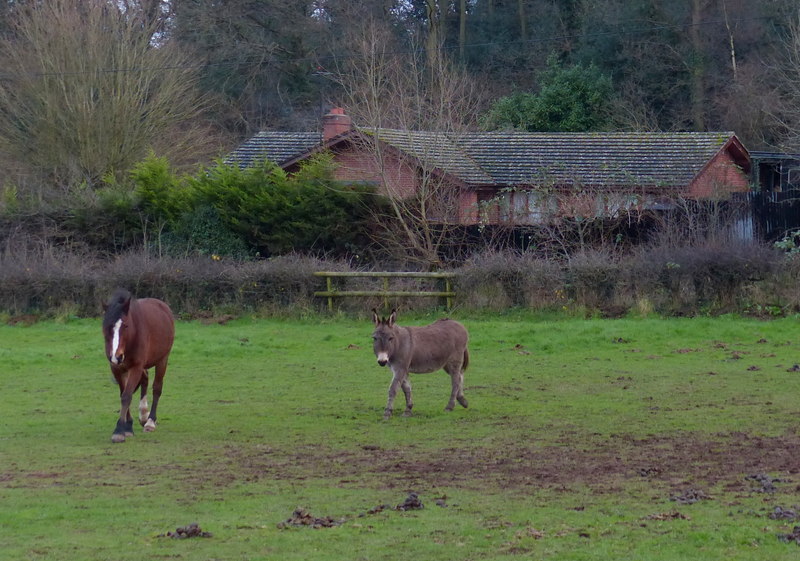
The social structures of horse and donkey herds differ in ways that create mutual benefits when the species intermingle on ranches. Horses naturally form complex hierarchical herds with intricate social relationships, while donkeys typically maintain looser associations with stronger bonds between pairs or small groups. When integrated, donkeys often provide companionship to horses that might otherwise be lower in the equine social hierarchy, reducing isolation stress for these individuals. The presence of donkeys can also diminish aggressive behavior among horses by diversifying the social dynamics of the group. Researchers have observed that mixed species groups often develop unique social structures that incorporate elements from both species’ natural patterns, creating stable and generally harmonious communities. These blended social arrangements frequently result in reduced stress behaviors in both species, suggesting mutual psychological benefits from the cross-species relationships.
Communication Across Species Lines
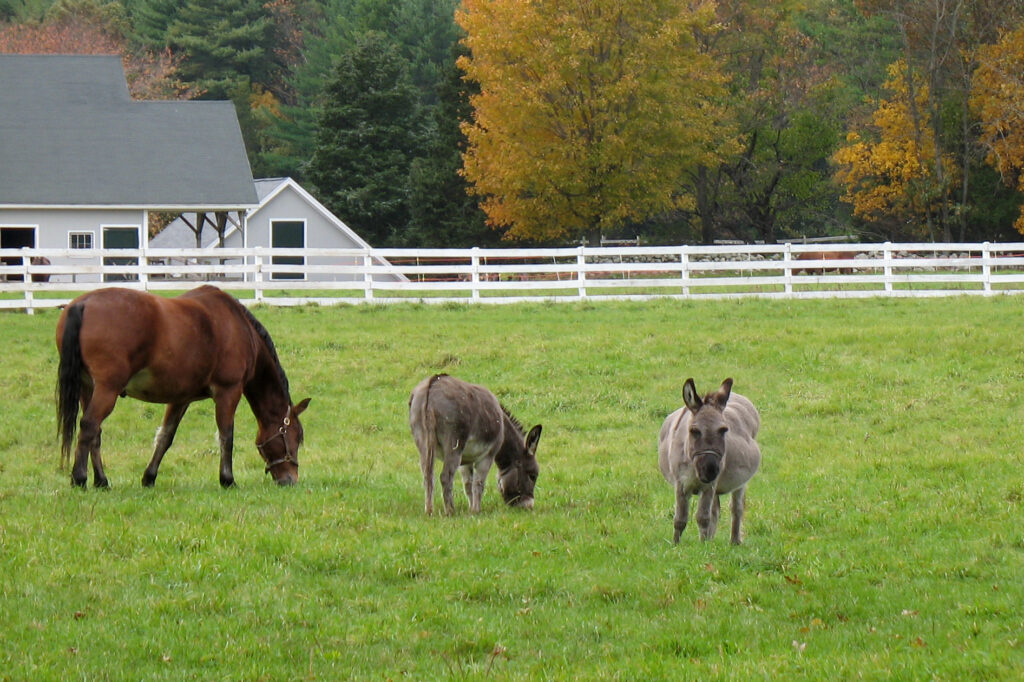
Despite their different vocal repertoires and body language, horses and donkeys develop sophisticated cross-species communication systems when living together. Horses primarily communicate through subtle body movements, ear positions, and soft vocalizations, while donkeys use their distinctive brays and more overt physical signals. Over time, these animals learn to interpret each other’s communication styles, adapting their interactions to accommodate these differences. Experienced ranch owners often observe horses responding appropriately to donkey warning signals and donkeys becoming attuned to the subtler communication methods of their horse companions. This interspecies communication extends beyond warning signals to include playful interactions, comfort-seeking behaviors, and even coordinated responses to human handlers. The development of these shared communication systems represents remarkable cognitive flexibility in both species and strengthens their social bonds.
Mutual Grooming and Physical Bonding
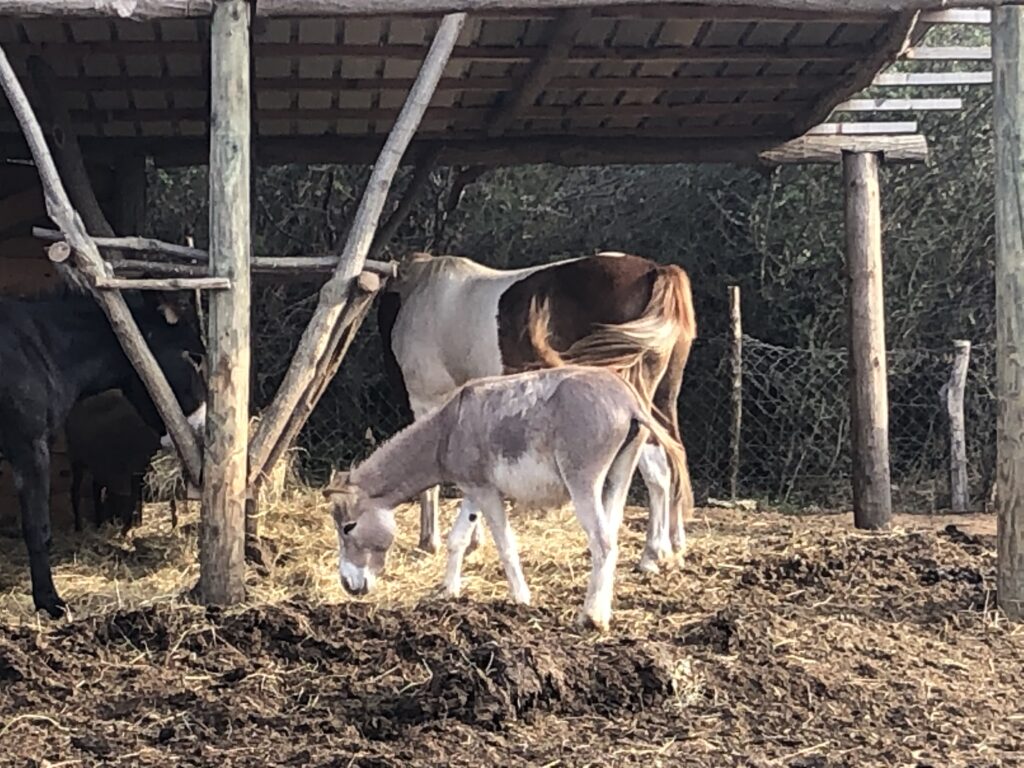
One of the most visible demonstrations of horse-donkey bonds is their participation in mutual grooming behaviors, which serve both practical and social purposes. During these grooming sessions, they use their teeth to scratch and clean areas the other cannot reach, particularly along the neck, withers, and back. This physical interaction not only addresses practical hygiene needs but also releases endorphins that reinforce their social connection. Observers frequently note that cross-species grooming partnerships often become ritualized, with specific pairs seeking each other out at regular times for these interactions. Beyond grooming, horses and donkeys may demonstrate their bonds through synchronized rest periods, shared sheltering behaviors during inclement weather, and coordinated grazing patterns. These physical expressions of companionship reflect the depth of the social relationships that can form between these different equine species.
Economic Benefits for Ranch Owners

The horse-donkey partnership offers significant economic advantages for ranch operations beyond their social dynamics. Donkeys typically require less feed than horses of comparable size and can thrive on rougher forage, reducing overall feeding costs for the ranch. Their superior health hardiness means lower veterinary bills in most circumstances, while their protective nature may eliminate the need for expensive fencing or other predator deterrents. Many ranchers report that horses maintained with donkey companions show reduced stress-related health issues and injuries, further decreasing veterinary expenses. The versatility of donkeys for pack work, light riding, or driving provides additional utility beyond their companionship role, making them multifunctional additions to ranch operations. These economic benefits make the horse-donkey relationship not just emotionally appealing but financially practical for ranchers managing their resources carefully.
Introducing Horses and Donkeys: Best Practices
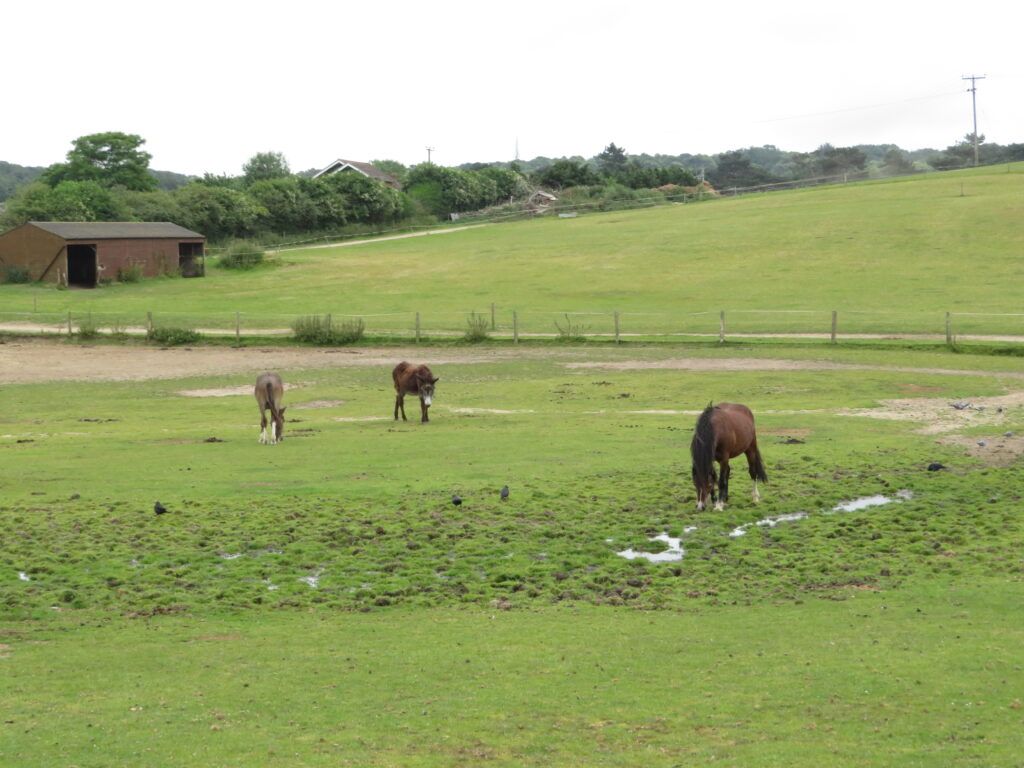
Successfully fostering horse-donkey bonds requires thoughtful introduction methods that respect both species’ behavioral needs and territorial instincts. Experienced ranchers typically recommend a gradual introduction process beginning with adjacent but separate paddocks, allowing the animals to become familiar through sight, sound, and smell before direct interaction. Young donkeys or those raised with horses generally integrate more easily than mature donkeys with no equine exposure. Neutral territory introductions often prove more successful than placing newcomers directly into established territories, reducing potential territorial aggression. Monitoring initial interactions closely is essential, as individual temperaments significantly impact compatibility, with some personality combinations proving more harmonious than others. The introduction process may take anywhere from days to weeks, with patience being essential to developing lasting positive relationships between these different equine species.
Challenges in Horse-Donkey Relationships
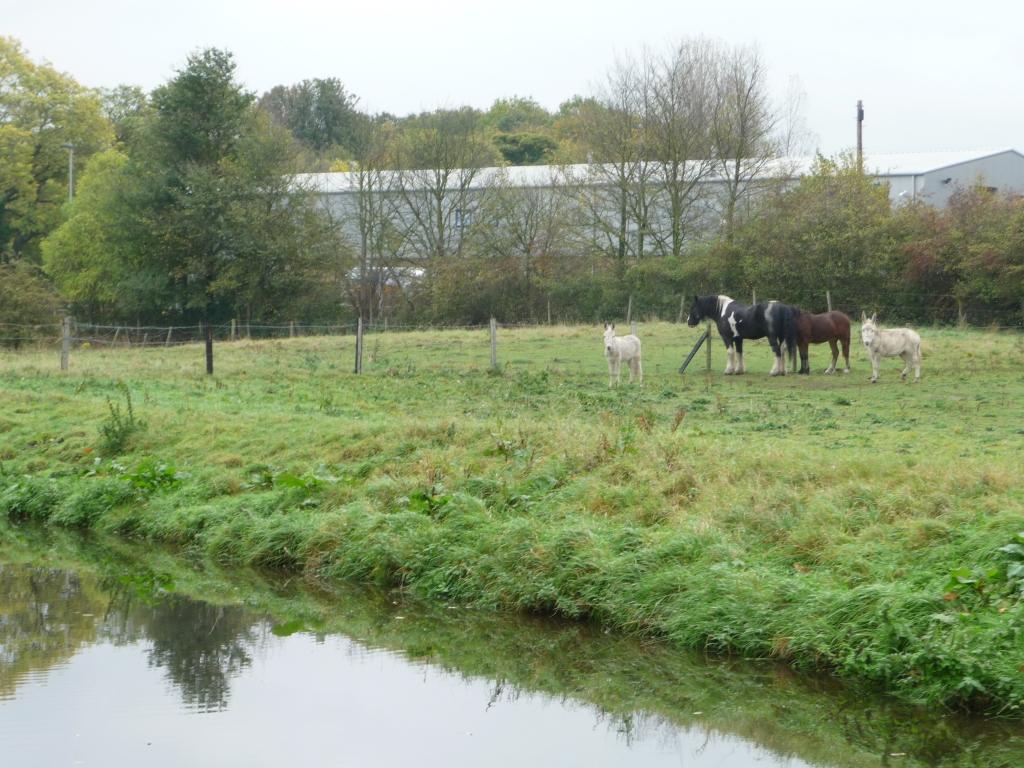
Despite their potential for strong bonds, horse-donkey relationships face several challenges that ranchers must navigate carefully. Communication misunderstandings can occur due to the different body language and vocalization patterns of each species, occasionally resulting in confused or inappropriate responses during new or stressful situations. Resource competition sometimes emerges, particularly in limited grazing situations or during feeding time, necessitating thoughtful management of food distribution. Some horses may initially find donkeys’ territorial behaviors intimidating, while some donkeys may be overwhelmed by horses’ more active play styles. Additionally, the different healthcare needs of each species require ranchers to maintain separate health protocols, as some medications and supplements appropriate for horses can be dangerous for donkeys. Understanding and addressing these challenges requires ranch owners to develop species-specific knowledge and management strategies while remaining attentive to individual animal needs.
Scientific Research on Cross-Species Bonds
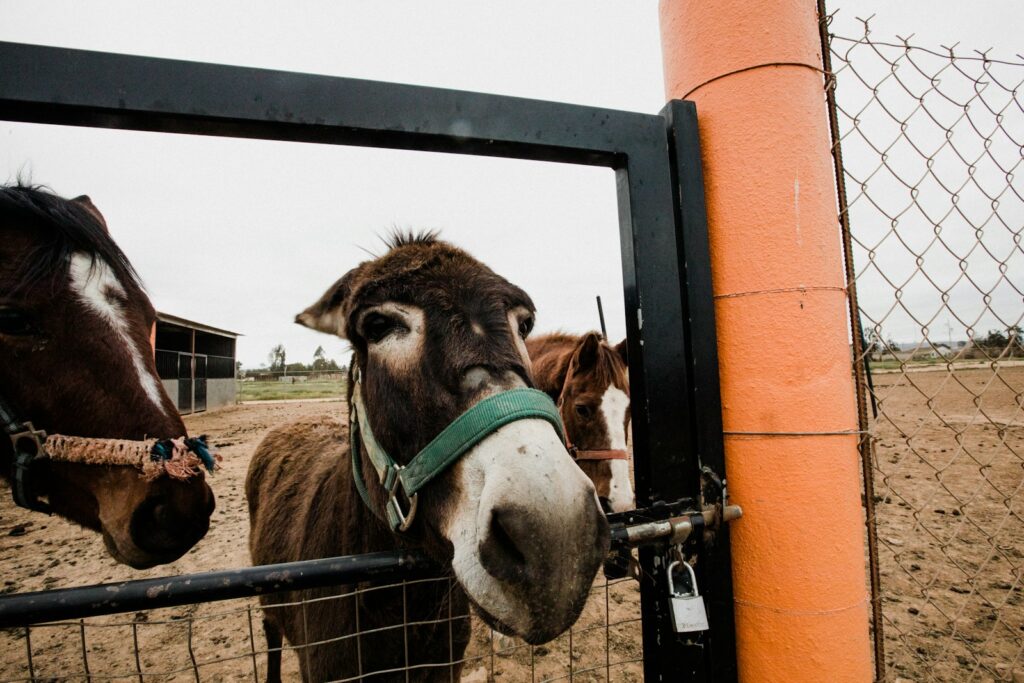
The bonds between horses and donkeys have attracted scientific attention as valuable examples of cross-species social relationships in domestic settings. Researchers studying these interactions have documented biochemical changes, including elevated oxytocin levels (the “bonding hormone”), in both species during positive interactions, suggesting a neurochemical basis for their social connections. Behavioral studies have mapped complex social networks in mixed herds, identifying patterns of preferential association that cross species lines, with some horses consistently choosing donkey companions over conspecifics. Cognitive research has demonstrated mutual social learning between the species, with each adopting certain behaviors from the other through observation and interaction. These scientific investigations provide important insights not only into equine behavior but also into the broader biological mechanisms underlying cross-species sociality, potentially informing our understanding of how diverse species can coexist productively in both managed and natural environments.
Cultural Significance of Horse-Donkey Partnership
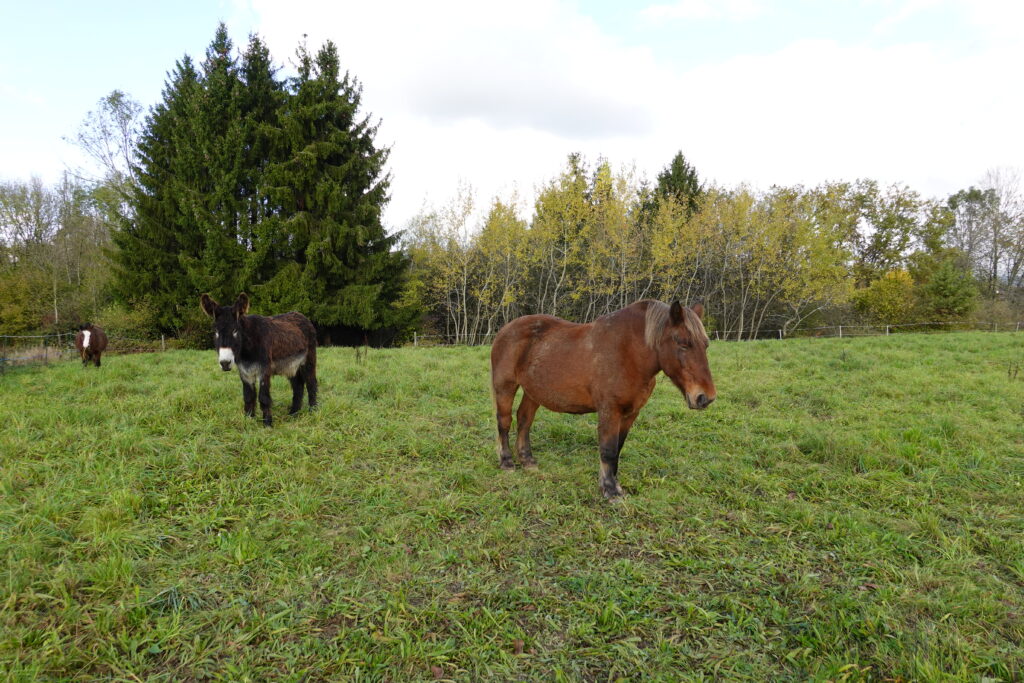
The relationship between horses and donkeys holds cultural significance that extends beyond their practical ranch functions, appearing in folklore, literature, and rural traditions worldwide. In many agricultural communities, the complementary traits of horses and donkeys have become symbolic of balance and harmony, representing the value of different strengths working together. Traditional wisdom in many ranching cultures includes specific knowledge about matching horse and donkey personalities for optimal partnerships, knowledge passed down through generations of animal husbandry. The visually striking contrast between the elegant horse and the sturdy donkey has inspired artistic representations that celebrate their differences while highlighting their companionship. These cultural dimensions add emotional resonance to the practical aspects of horse-donkey relationships, connecting modern ranching practices to historical agricultural traditions and deeper narrative traditions about unlikely friendships.
Case Studies: Notable Horse-Donkey Bonds
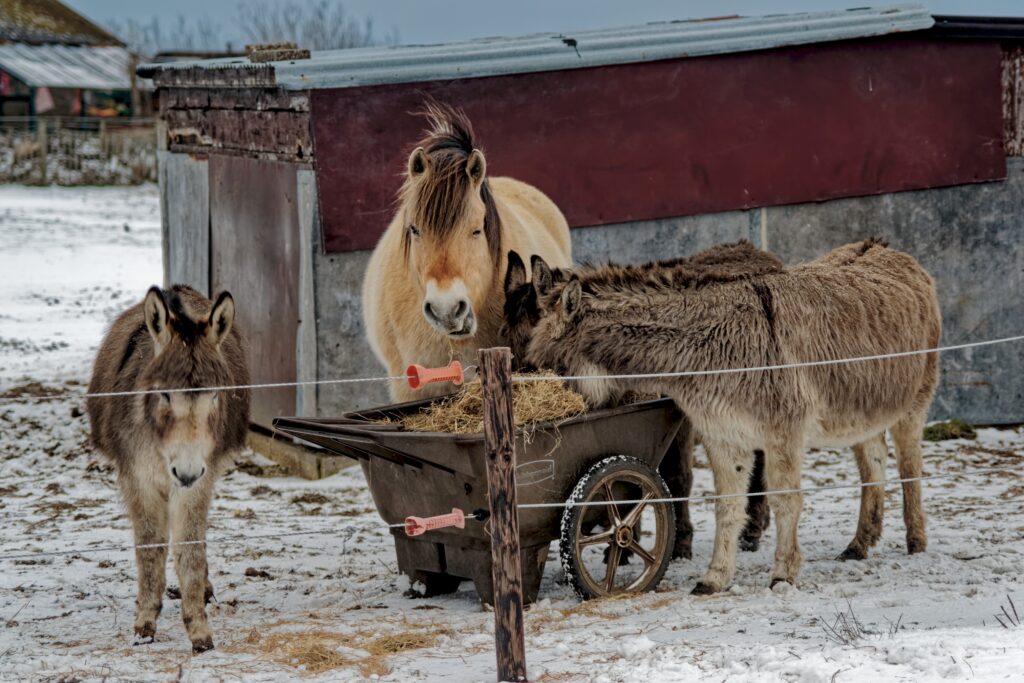
Documented cases of exceptional horse-donkey bonds provide compelling evidence of the depth these cross-species relationships can achieve. On the Triple R Ranch in Wyoming, a miniature donkey named Oliver formed such a strong bond with an elderly thoroughbred mare that he exhibited signs of depression when temporarily separated during the mare’s medical treatment, refusing food until reunited. At the Sunshine Sanctuary in Arizona, researchers documented a remarkable case where a donkey learned to mimic the specific head-tossing behavior of his horse companion, developing a shared communication signal unique to their relationship. The Wild Horse Rescue Center in Florida reported the case of a traumatized mustang who would only accept human handling when accompanied by his donkey companion, who effectively served as an emotional support animal. These case studies, while anecdotal, provide valuable insights into the individual nature of horse-donkey relationships and their potential therapeutic benefits for animals with behavioral or emotional challenges.
The Future of Horse-Donkey Partnerships on Modern Ranches
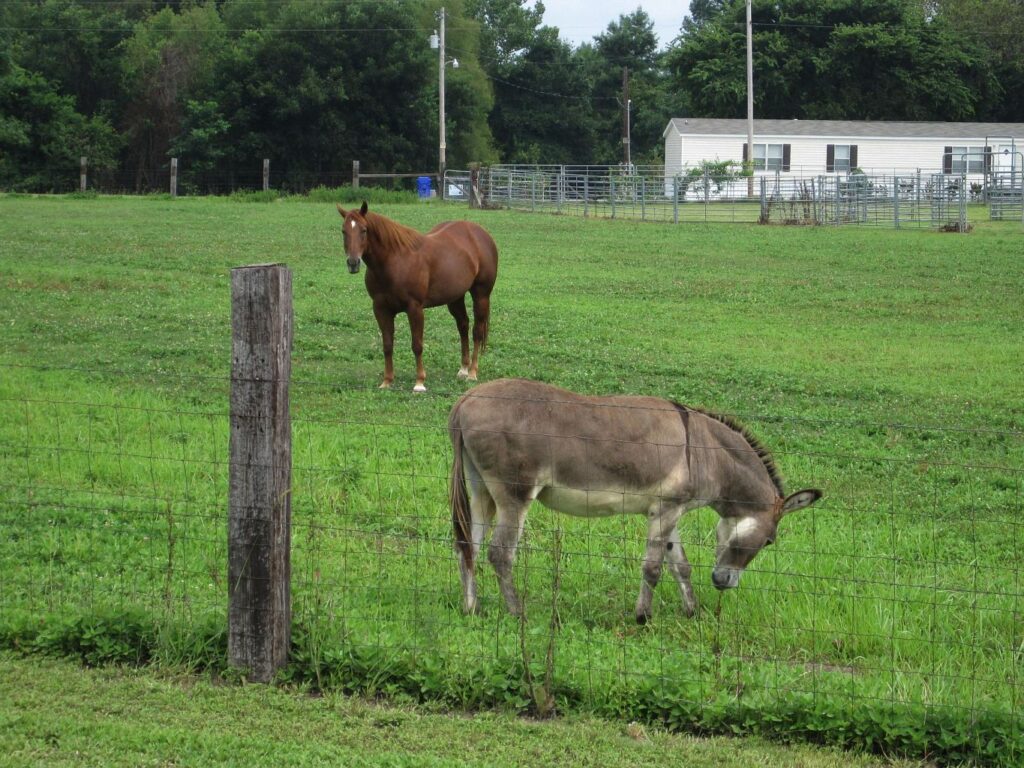
As ranching practices evolve with new technologies and changing agricultural economics, the traditional horse-donkey partnership continues to demonstrate remarkable relevance and adaptability. Modern ranch managers increasingly recognize the cost-effectiveness of integrated species management, with some large operations systematically incorporating donkeys into their horse herds based on documented improvements in herd health and reduced predation. The growing interest in sustainable and natural farming methods has renewed appreciation for these traditional animal partnerships as alternatives to chemical or mechanical solutions to ranch management challenges. As climate change affects grazing conditions in many regions, the donkey’s superior adaptation to harsh environments may become increasingly valuable in mixed herd situations. These trends suggest that despite technological advances in ranch operations, the ancient partnership between horses and donkeys continues to offer practical benefits that technology cannot readily replace, ensuring its continued presence in ranching’s future.
Conclusion
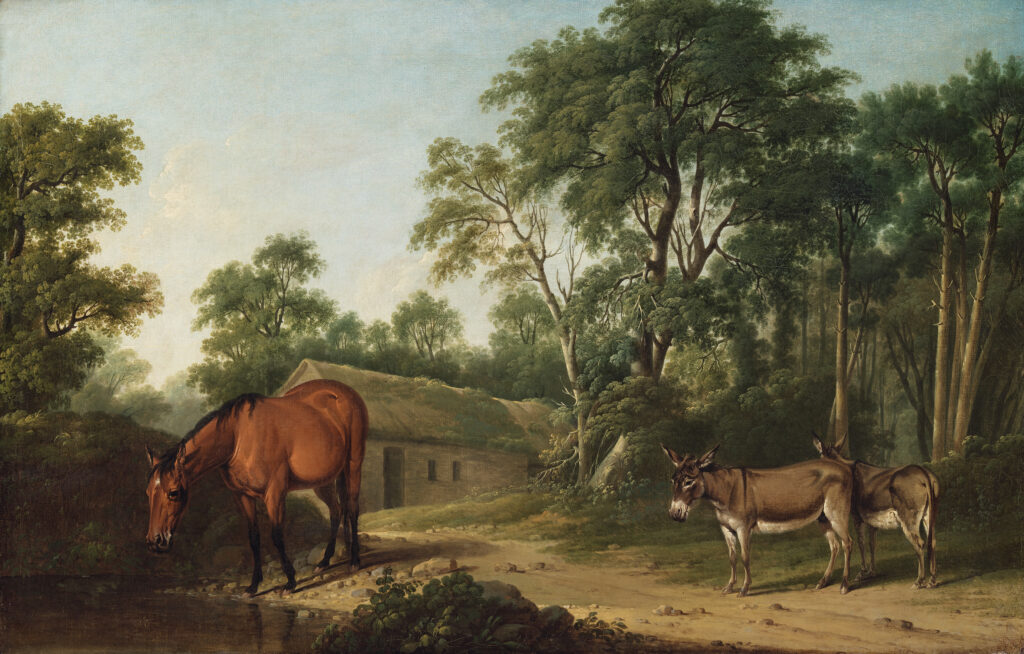
The unlikely bond between horses and donkeys on ranches represents a fascinating intersection of evolutionary biology, animal behavior, and practical agriculture. These cross-species relationships, built on complementary strengths and mutual benefits, demonstrate the remarkable adaptability of social animals when given the opportunity to form connections beyond their own kind. For ranchers, these partnerships offer practical advantages in protection, behavioral management, and economic efficiency. For scientists and animal lovers, they provide compelling examples of animal cognition and social flexibility. As we continue to learn more about these distinctive equine relationships, they remind us that cooperation and companionship can transcend the boundaries we often assume exist in the natural world, offering lessons in coexistence that extend beyond the ranch fence.

